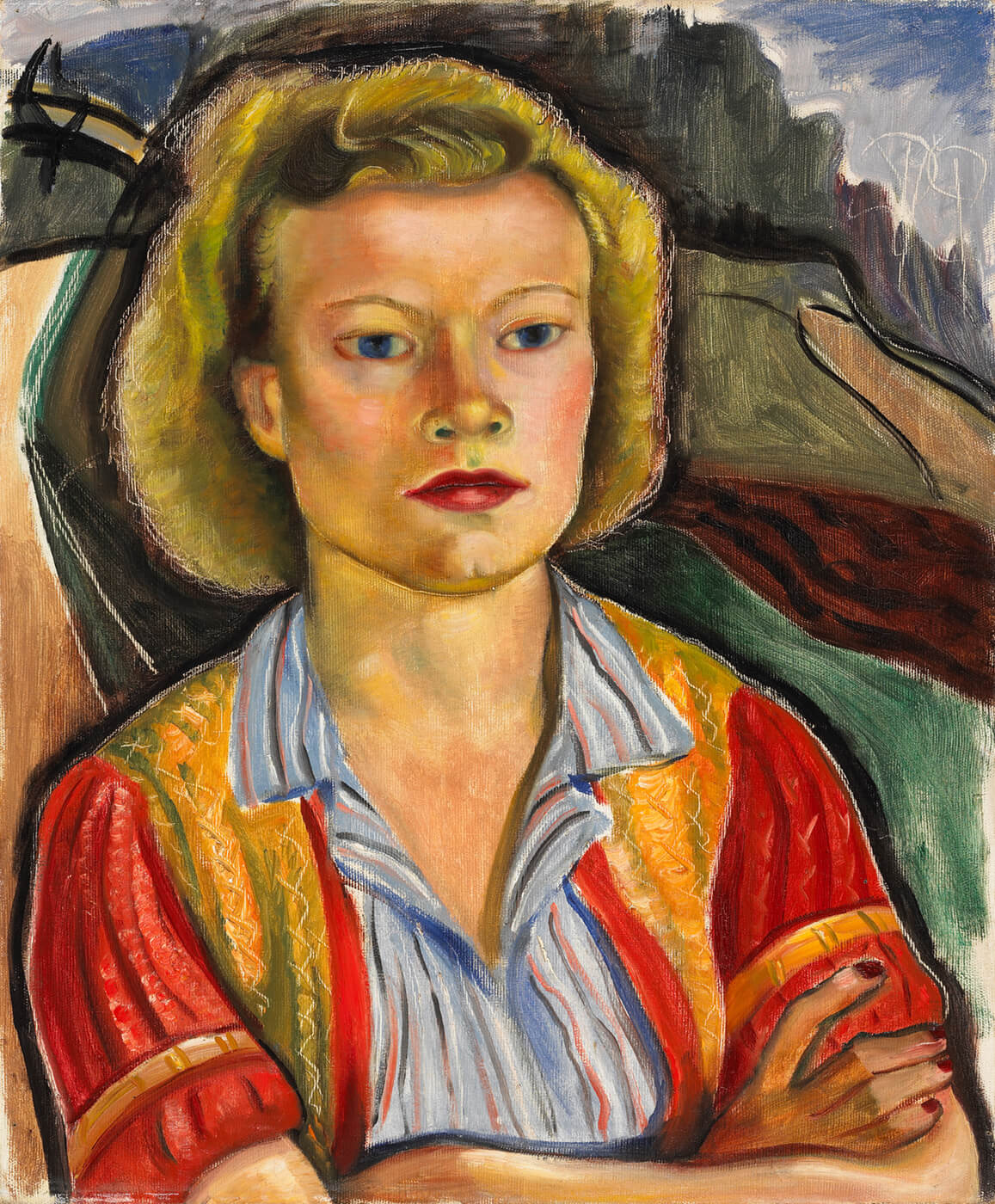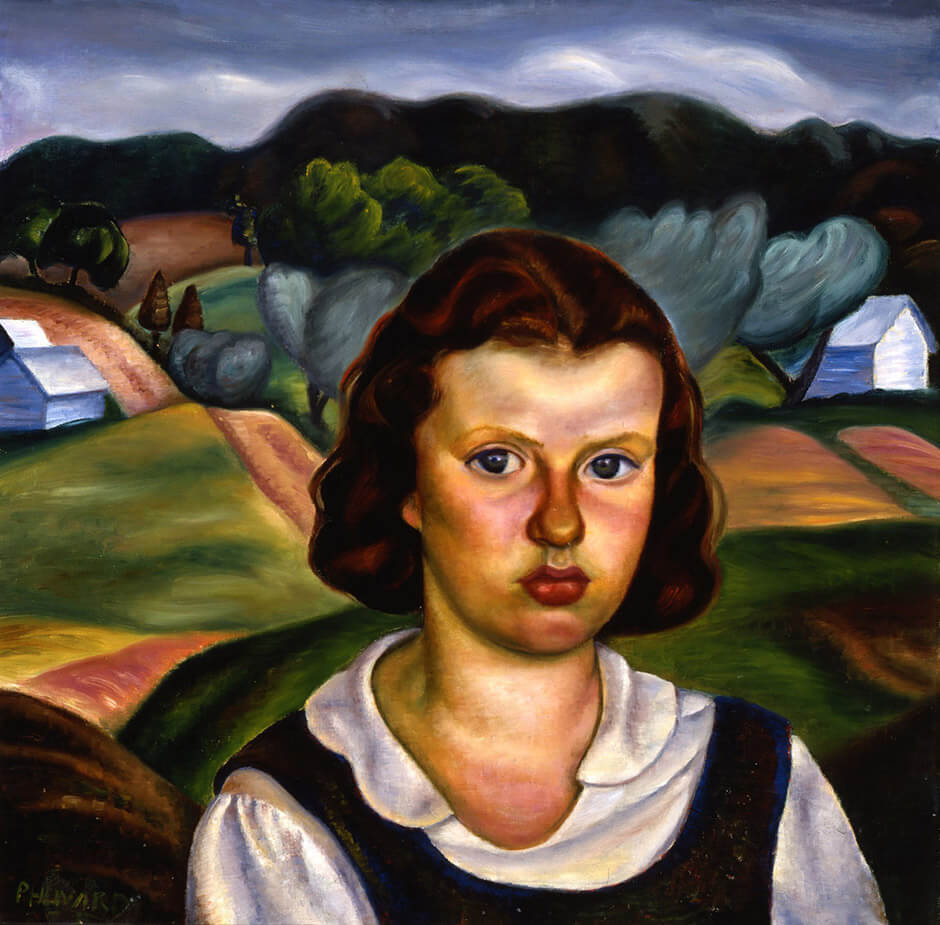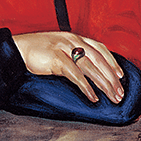Farmer’s Daughter 1945

Prudence Heward, Farmer’s Daughter, 1945
Oil on canvas, 61.2 x 51.2 cm
National Gallery of Canada, Ottawa

The woman in this painting is an intriguing amalgam of many of Heward’s previous female subjects, and the canvas is one of the last she produced. The sitter is depicted within a rural setting, as in Rollande, 1929; she occupies most of the pictorial space, as does Mabel Lockerby (1882–1976) in At the Café, c. 1929; she shares a title with the younger Farmer’s Daughter of 1938; and she has dark red lips and red nails, as does the subject in Portrait (Mrs. Zimmerman), 1943, a work painted two years before this one.
It is tempting to read Heward’s representations of women in a linear narrative fashion. Both Farmer’s Daughter of 1938 and Rollande explore a young woman’s ambivalent relationship with the land and rural life. In the 1945 Farmer’s Daughter, by comparison, the landscape is not as carefully depicted, suggesting that it holds less importance for the female subject. As art historian Barbara Meadowcroft notes, the fence, an important symbol in Rollande, is reduced to a mere squiggle in the Farmer’s Daughter of 1945. Heward no longer relies on symbolism to communicate her meaning, focusing instead on the woman’s physical and psychological strength, indicated by her facial expression and other body language.
Although visual similarities exist between the woman in the 1945 Farmer’s Daughter and the girl in the 1938 version, there is an obvious age difference between the two sitters. Nonetheless, Heward invites her viewer to read the two paintings in relation to each other by giving them the same title. Whereas both daughters are shown relatively close to the picture plane, the younger daughter is cut off at the bust, and she appears somewhat uncertain, if not defiant. The older daughter occupies much more of the pictorial space. She crosses her arms in a confident gesture, and her gaze is level, her face set in an expression of determination. If this woman has decided to leave the rural life behind her, we cannot doubt that she will follow through on that decision.

 About the Author
About the Author
 More Online Art Books
More Online Art Books
 Acknowledgements
Acknowledgements